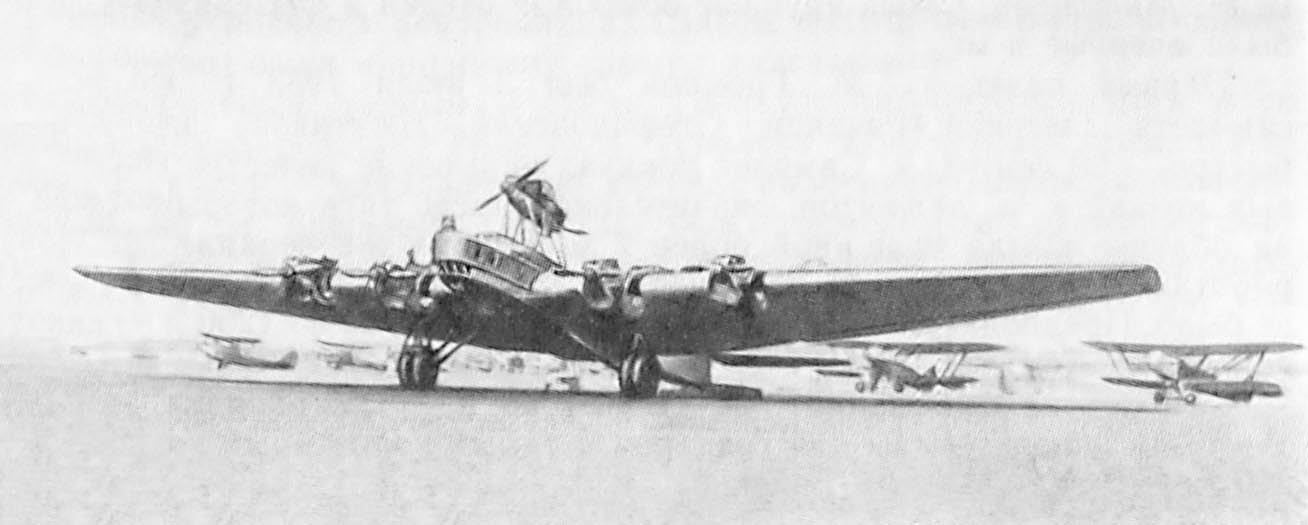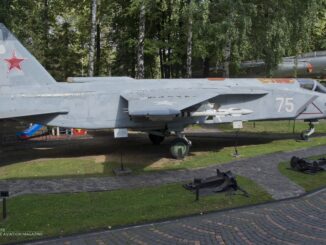
The first flight of Tupolev ANT-16
The Tupolev ANT-16, also known as TB-4 by its military designation, was a prototype of heavy bomber developer from Tupolev´s earlier bomber design, TB-3.
The ANT-16 was built in the very beginning of 1930’s and followed an idea, that – with regards to the bomber aircraft – size, payload capabilities and armament are much more important than the speed. And indeed, this was a big aircraft and its dimensions can make an impression even nowadays: fuselage length of 32 metres, 54 metres of wingspan (422 m2 of wing area) and 17,3 metres of height!
The new bomber had to be able to carry up to 8,000 kg of bombs on a distance up to 940 km or 2,000 kg of bombs on a distance up to 2,000 kilometres. That´s why it was equipped with double bomb bay of 5 x 1,8 x 1,8 metres. At that time they were the largest aircraft bomb bays in the world. Apart from the bomb load, the armament of this aircraft included five Degtyaryov 7,62 mm double-machine guns and four 20 mm cannons.
The ANT-16 was powered by six Mikulin AM-34 V-12 liquid-cooled piston engines, each of them generating 750hp and equipped with two-bladed fixed-pitch propellers. Interesting fact is that four of the engines were installed conventionally on the aircraft’s wings, but the other two were mounted on cantilevers placed on top of the fuselage in one after another configuration. The crew of 12 people was necessary to operate that flying monster.
The only prototype of ANT-16 ever built performed its maiden flight exactly 87 years ago, on 3rd July 1933, flown by the famous Soviet military aviator and test pilot Mikhail Mikhailovich Gromov. Within the next three months, until 29th September, further test flights were performed. Their results were unsatisfying, not to tell disappointing. The performance of both engines mounted on cantilevers was deficient. Moreover, the other four engines installed on the wings were also ineffective. As it turned out, their thrust was being significantly reduced by the profile of the wings, that were as much as two meters thick.
In a result, the flying characteristics of the aircraft were really poor, including climb rate and speed. The aeroplane was able to reach altitude of 1,000 metres in as many as 12 minutes and 24 seconds, it´s maximum speed was 200 kph at sea level and 188 kph at altitude of 5,000 metres. And the cruise speed was only 159 kph. The poor performance caused the more powerful engines – Mikulin AM-35, 1,250hp each – were considered as a replacement, but it didn´t happen.
Initially, two prototype examples of Tupolev ANT-16 were planned to be built but works on the second one were stopped on 2nd July 1933, just a day before the first one got airborne. Later, some of its parts were used in construction of ANT-20.
Photo: Tupolev ANT-16 (Wikipedia, Public Domain)



